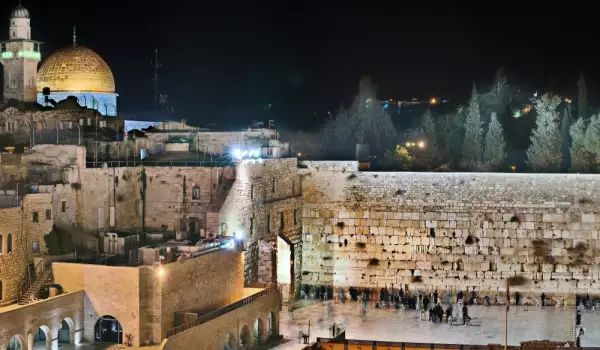The Wailing Wall

The Wailing Wall is one of the most mysterious and attractive places in Jerusalem. It is located in the old part of the Israeli city.
The place is one of the sacred places in Judaism. The Wailing Wall is actually the remains of a retaining wall that thousands of years ago supported the famous Temple Mount.
The wall dates from the 19th century BC. It was built during the reign of Herod the Great. At the beginning of the new chronology, however, the Romans destroyed much of the Jewish holy city. The Wailing Wall is the only surviving structure from the facility.
The wall was once an integral part of the most impressive facility in Jerusalem - ie. The Second Temple built by King Solomon. Its remains can be seen today in the underground tunnels of the city.
During the medieval times, the ruins of the great temple received the name Wailing Wall because Jews often went there to mourn for the destruction of the temple.
Another legend says that the Wailing Wall was named thus because of its stones shining drops of dew that look like tears.
Today, the Jerusalem Wall is one of the most revered sites in Israel and the top attraction of the Jewish city.
The Wailing Wall, also known by the name western wall is 48 meters long. Its height reaches 18 meters.
Of interest is that the Wailing Wall has two entrances. One is for women, the other for men, as mandated by the Jewish religion.
Usually believers and tourists place notes with their secret desires in the gaps of the centuries old wall or just send a prayer and blessing. Some visitors even say that when touched, the wall vibrates and radiates unexplained energy.
It is important to know that women who have not wrapped their heads with a scarf or cloth will not be admitted to the wall. Men also need to wear specific caps. To maintain order and respect for the sacred rules, special religious observers exist.
Around the wall are many fountains, where the Jews wash their hands before the prayer.
The square with the wall is called the Wailing "Kotel Ma'aravi". Around it there are plenty of hotels, restaurants and recreation.
The cultural and religious monument is visited daily by thousands. Therefore, the authorities in Jerusalem began to be worried about the stability of the masonry, with a view of centuries of its existence. In order to strengthen and offer better security, the Israeli government takes measures for its preservation by compacting the stone edifice.
Another interesting detail is that twice a year the Chief Rabbi of Jerusalem cleans thousands of pieces of paper from the Wailing Wall on which believers from around the world write their innermost desires. The pieces of paper are burned in order to preserve the integrity of your desires.
There is another interesting fact, consistent with modern lifestyles. Recently the world's leading media speculated that it is now possible to send your desires by fax or mail to reach the Western Wall, thanks to a clergyman.
The holy site in Jerusalem is home to the believers of different religions. There the paths of Judaism and Islam are intertwined.
The famous Temple Mount brings together two sacred religions. Adjacent to the Wailing Wall is the third most revered place in Islam - the stone from which Mohammed ascended into the sky. There were built two religious centers - Dome of the Rock and Al-Aksa Mosque.
In the world of Islam, these buildings are no less important than Mecca and Medina.















